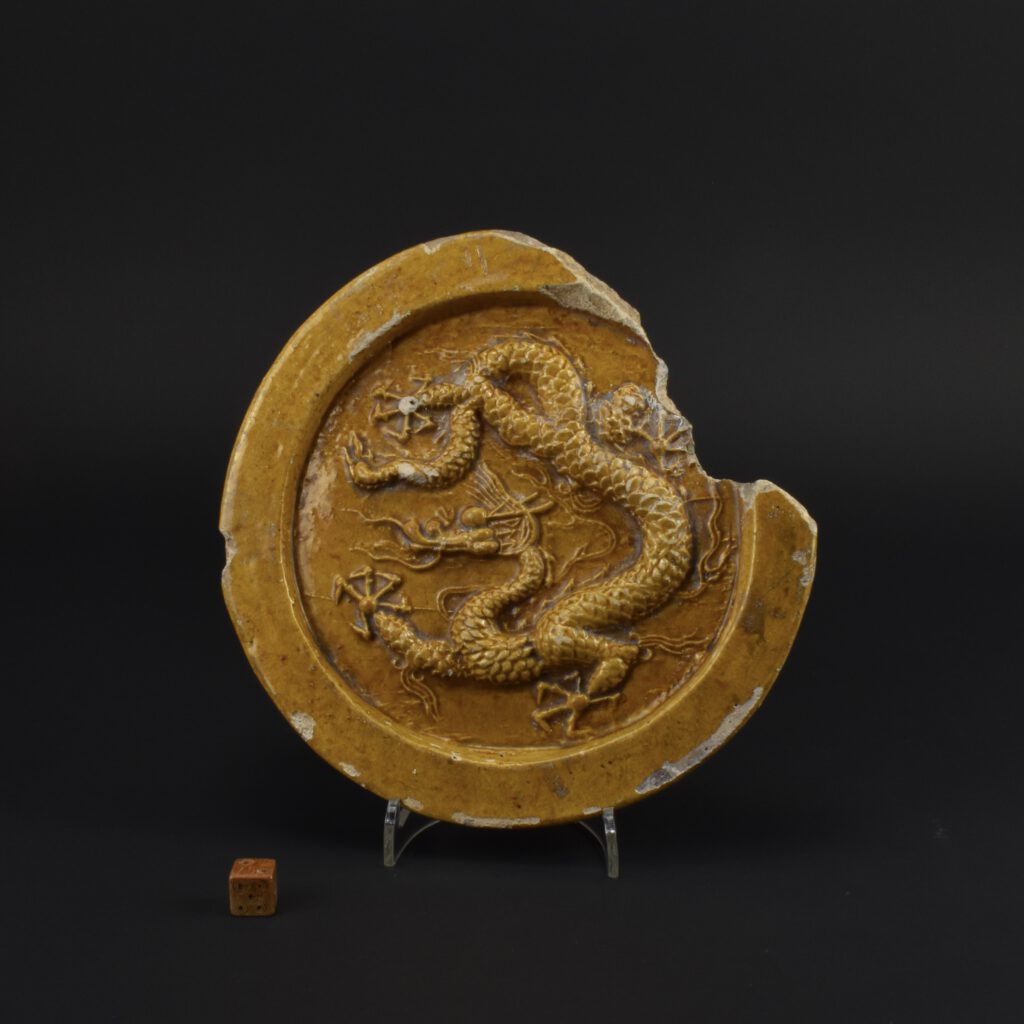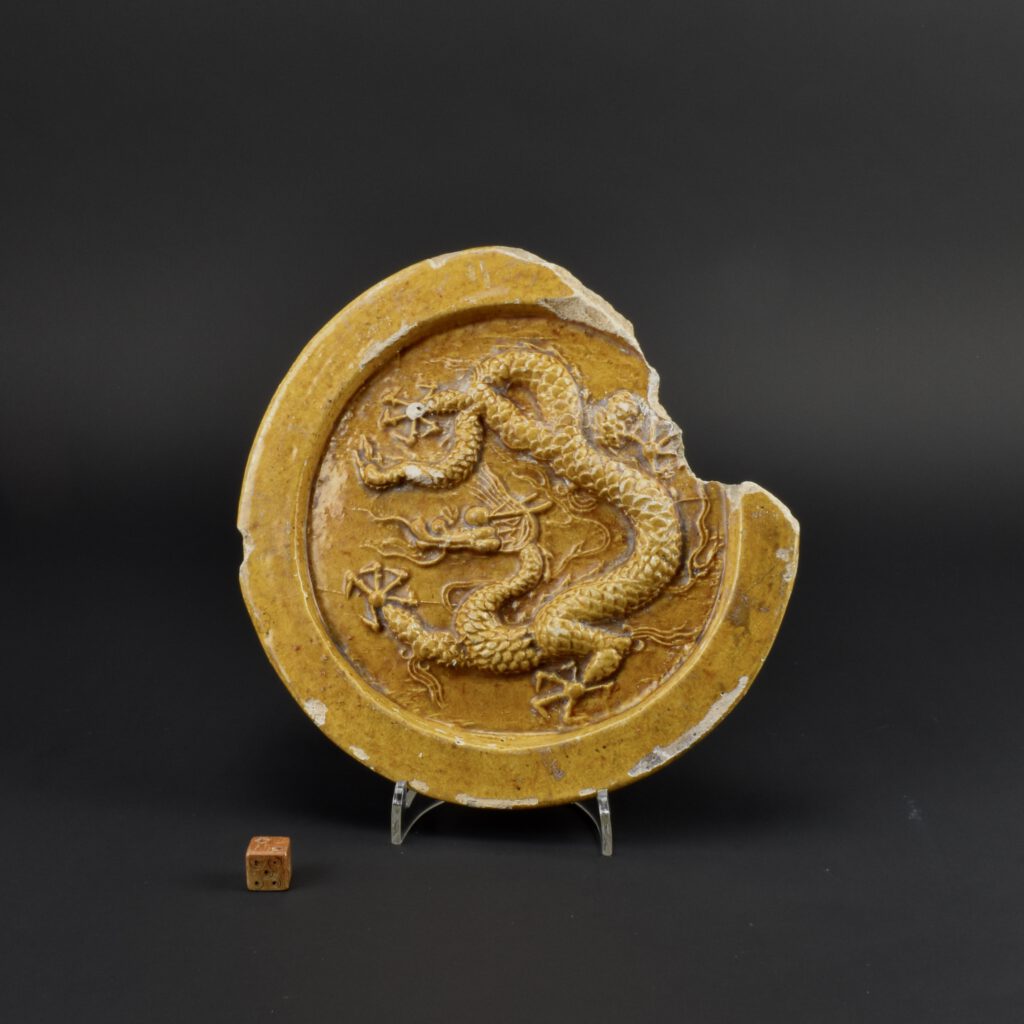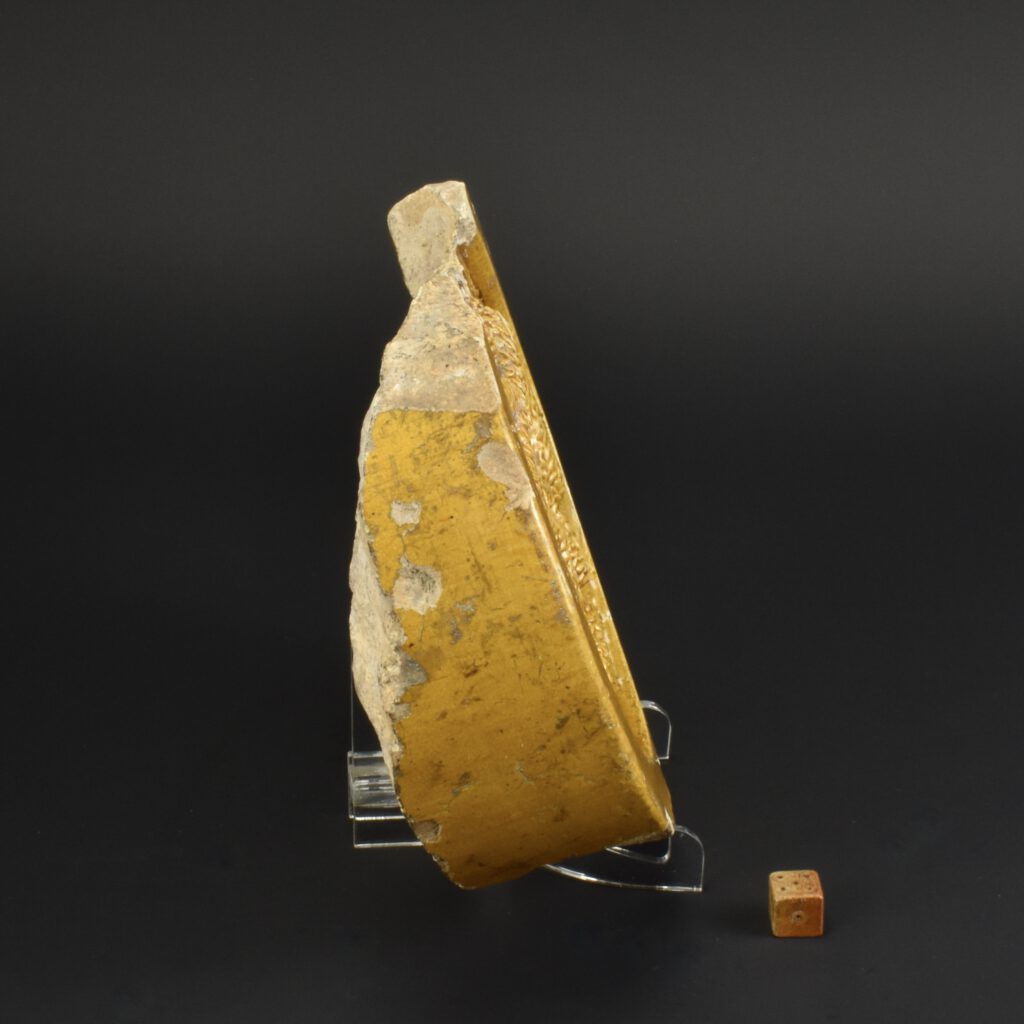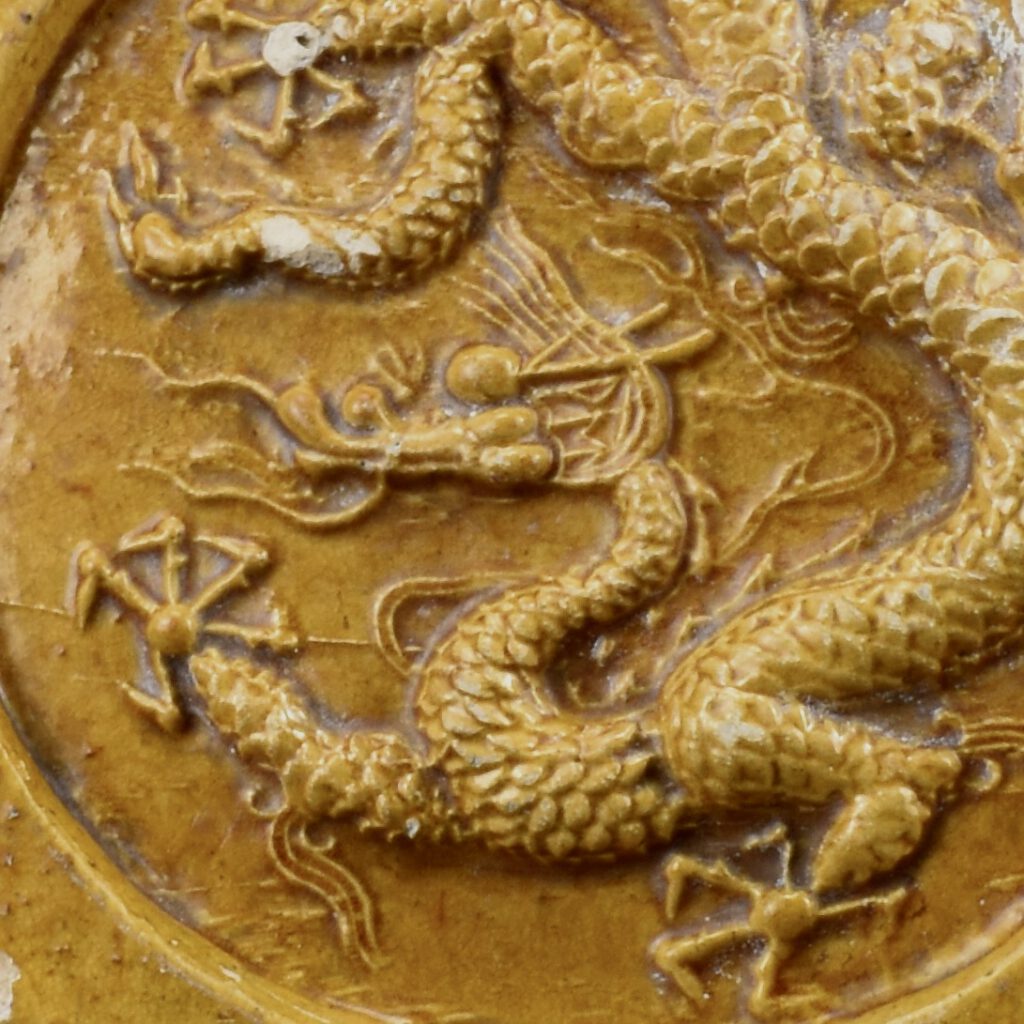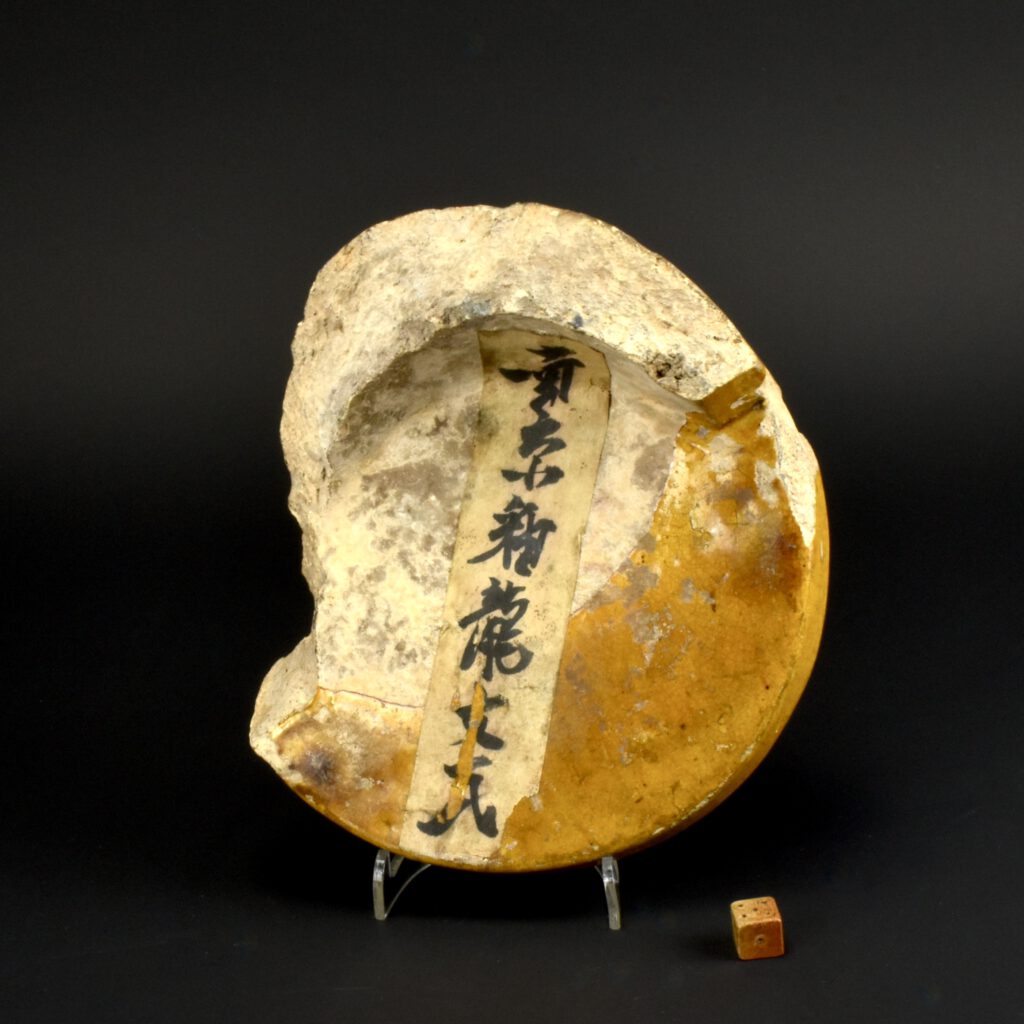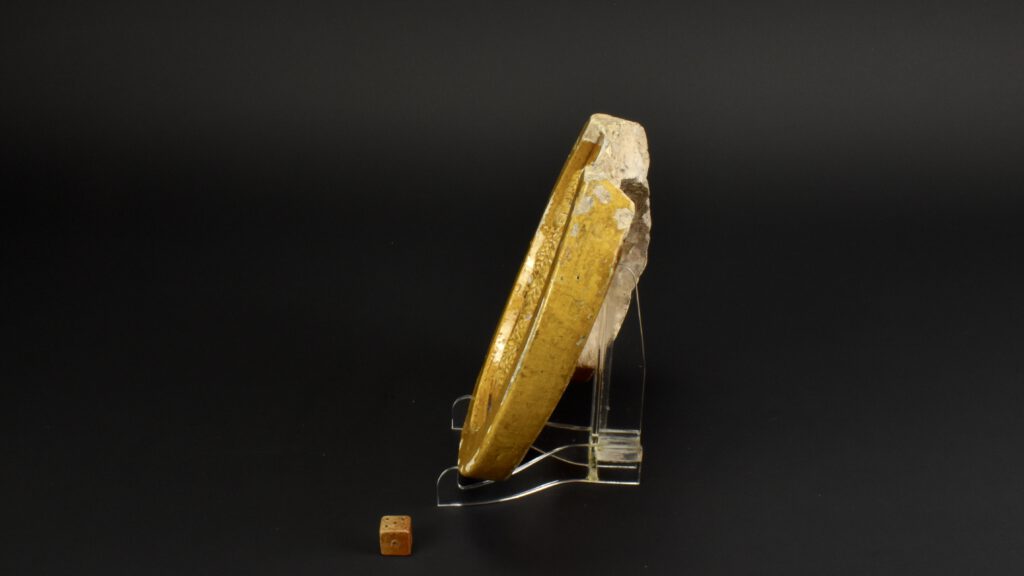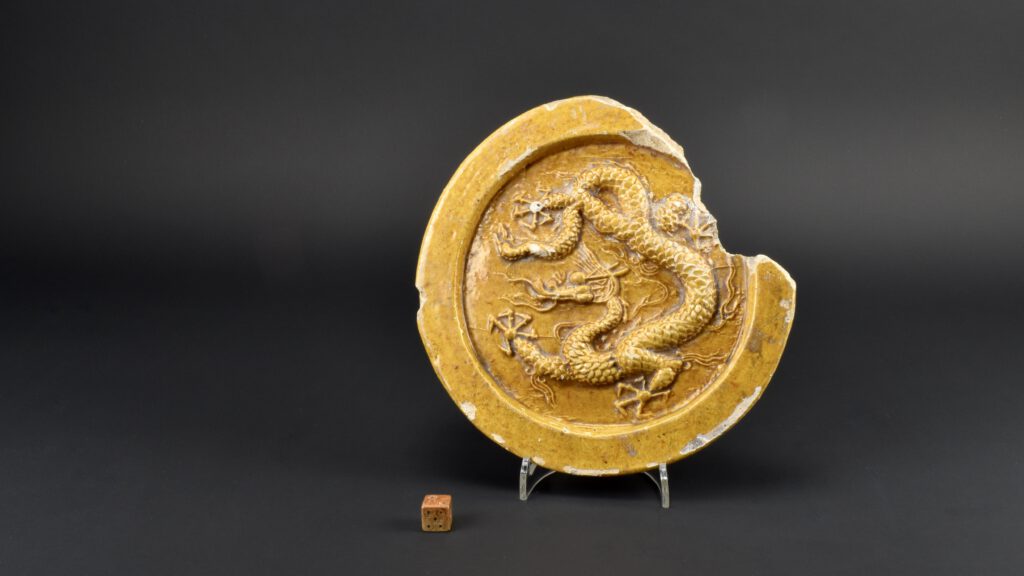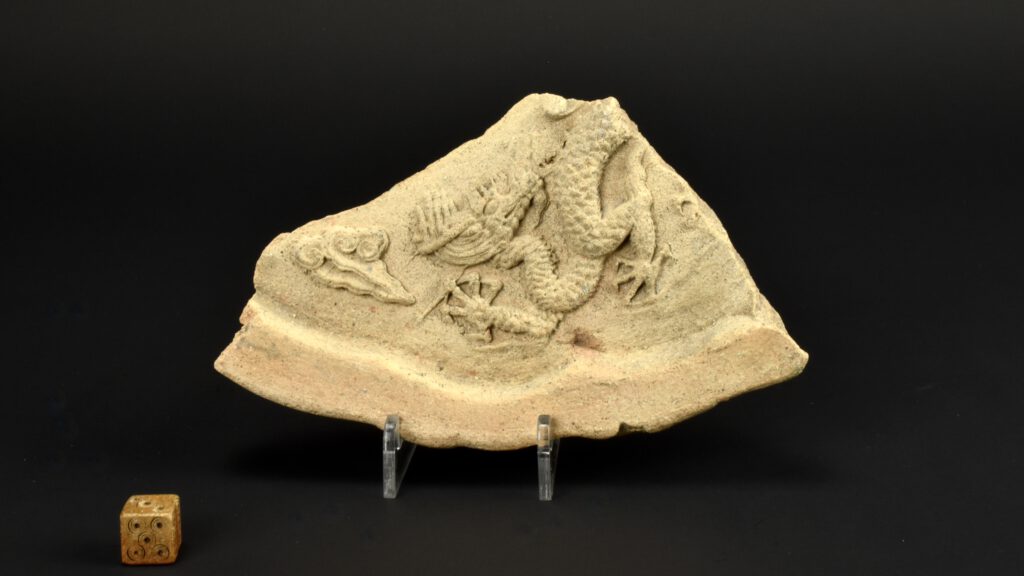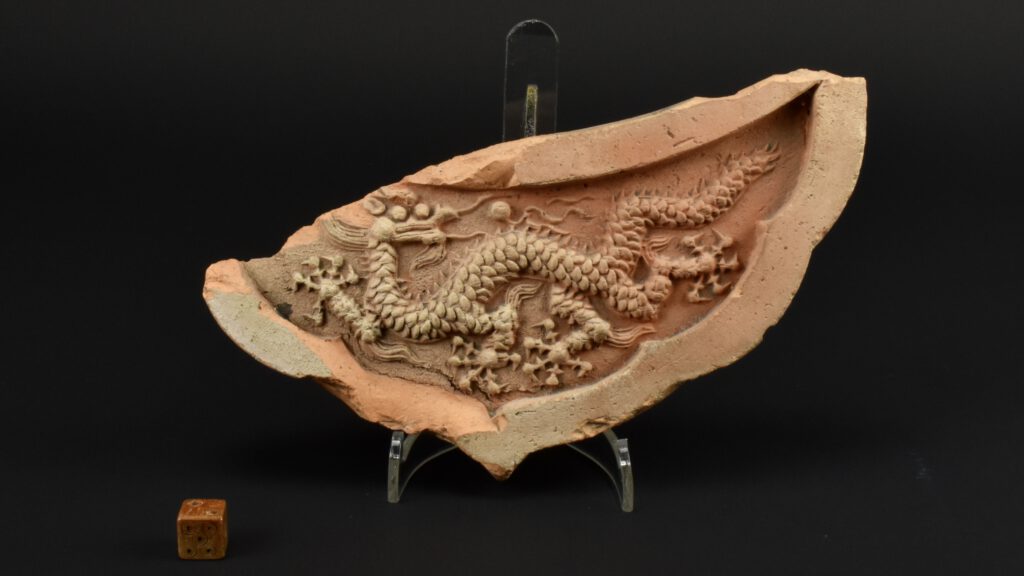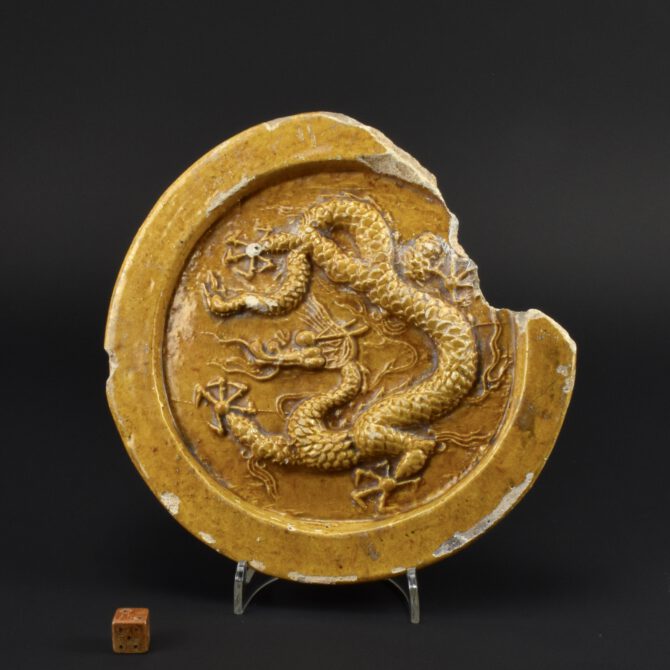
An Imperial Early Ming Pottery Goutu Tile c.1366 – 1400
A Rare but Damaged Imperial Ming Earthenware Goutou tile, Hongwu 1368–1398 (or perhaps Yongle period 1402 – 1424). This circular eave-end tile known in Chinese as Goutou, shows an imperial five claw dragon chasing a flaming pearl. The finely moulded design is glazed with a high flux imperial yellow lead-glaze coloured to denote it was made for an imperial building. Probably made in Zhubaoshan near Yuhuatai, south Nanjing. Possibly made for Hongwu emperor’s palace, east of Nanjing, or the Ming palace, north-east Nanjing. The back with an inscribed paper label which can be translated to Nan’Jing glazed dragon tile. This is a nice piece of provenance linking this fragment to where it was found, which in turn links to Hongwu. For similar Ming goutou yellow-glazed earthenware tile found in 1953, near the city wall at Zhongshan gate, north-east Nanjing, near the site of the Ming palace of the Hongwu, Jianwen and Yongle emperors. This information is from Jessica Harrison-Hall’s wonderful book : Catalogue of Late Yuan and Ming Ceramics in the British Museum (Jessica Harrison-Hall.The British Museum Press, 2001. ISBN 0-7141-1488-X.) page 521, items 18:3, 18:4 and page 521 18:6. See other examples below the photograph gallery. The kiln wasters shown with this tile from the Robert McPherson Antiques Reference Collection and are therefore Not For Sale.
See Below For More Photographs and Information.
SOLD
- Condition
- A loss to one side, chips and glaze loss. This piece is the front of the tile that stretched back under other tiles would keep it key it into the building.
- Size
- Diameter : 19 cm (7.4 inches)
- Provenance
- From a Japanese collection.
- Stock number
- 27503
- References
- The back with an inscribed paper label which can be translated to Nan'Jing glazed dragon tile. For very similar Imperial Ming tiles see: Catalogue of Late Yuan and Ming Ceramics in the British Museum (Jessica Harrison-Hall.The British Museum Press, 2001. ISBN 0-7141-1488-X.) page 521, 18:4 and page 521 18:6.
Information
Ming Pottery Roof Tiles Liuli Wa
According to traditional Chinese belief, roofs are platforms of communication between the words of the living and spirit realms. Consequently they were decorated to ward off evil and to act as a magnet for blessings and good fortune. Marco Polo was struck by the visual effect of these brightly coloured tiles, remarking while describing Khubilai Khan`s palace at Dadu (modern day Beijing) The roof is all ablaze with scarlet and green and blue and yellow and all the colours that are, so brilliant varnished that it glitters like crystal and the sparkle of it can be seen from far away. The Chinese had made ceramic tiles from early times but it was the Ming dynasty that saw the largest period of production, much of this was based in Shanxi Province at small family run kilns that passed down from generation to generation. Glazed tile-work is known in China as Liuli Wa, literally `roof-tile of glass`, a term dating back to the Tang Dynasty (618-906) although Tang tiles are now very rare. The soft earthenware used to make Ming tiles varies but often is uneven in its constitution with lots of grog. The tiles were mould made with a large amount of hand working, giving a completely hand-made look with lots of sharp detail and undercutting. They were lead glaze and low fired which means the glaze often runs. There were two basic colour schemes used Sancai (greens,yellows and browns) and the darker palette of Fahau (turquoise, blue and purple). The dating of Chinese glazed tiles, which were made over a long period of time with little change, is difficult. Knowing when the building they came from was build doesn't help as tiles, exposed to the elements, needed replacing from time to time and so a building might contain tiles made over several centuries. However an approximate chronology can be understood, and with the study tile construction replacements can be identified as being different to the genuine Ming examples.
Ming Pottery Roof Tiles
In my descriptions I have relied heavily on Jessica Harrison-Halls wonderful and indispensable catalogue of late Yuan and Ming ceramics at the BM, see : Catalogue of Late Yuan and Ming Ceramics in the British Museum (Jessica Harrison-Hall.The British Museum Press, 2001. ISBN 0-7141-1488-X.)
Early Imperial Ming Tiles
Robert McPherson Antiques - Sold Archive.
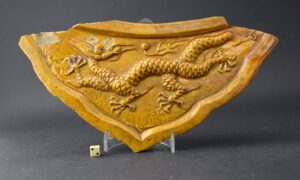
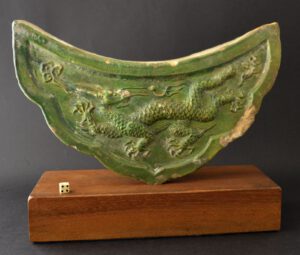
Robert McPherson Antiques Reference Collection.
Hongwu 1368–1398 or Yongle period 1402 - 1424.
Imperial early Ming unglazed earthenware kiln wasters.
Not For Sale.
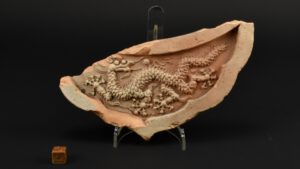
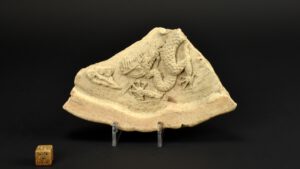
Robert McPherson Antiques - Stock Number 27502.
A Rare Imperial Ming Earthenware Dishui tile,
Hongwu 1368–1398 (or perhaps Yongle period 1402 – 1424).
(Shown with two Imperial early Ming unglazed earthenware kiln wasters that are not for sale).
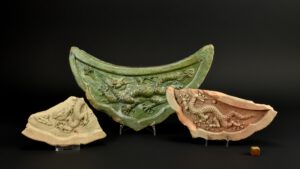
Condition
A chip to the edge, small chips. The piece from the top of the tile that would key it into the building is missing
Size
Length : 26 cm (10 1/4 inches)
Provenance
N/A
Stock number
27502
References
For very similar Imperial Ming tiles see: Catalogue of Late Yuan and Ming Ceramics in the British Museum (Jessica Harrison-Hall.The British Museum Press, 2001. ISBN 0-7141-1488-X.) page 521, items 18:3, 18:4 and page 521 18:6.
An Imperial Ming Goutou Tile in the British Museum c.1366-1400.
Made in Jiangsu Probably made in Zhubaoshan near Yuhuatai, south Nanjing.
Curator's comments Harrison-Hall 2001:
"Two similar tiles, one with a dragon beneath a yellow glaze and one with a phoenix beneath a green glaze (symbols of the emperor and empress), are in the Victoria and Albert Museum, London. These were recovered in 1908 by William Percival Yetts (1878-1957) at the Ming palace near Nanjing, built 1366-86 and occupied by the Hongwu, Yongle and Jianwen emperors."
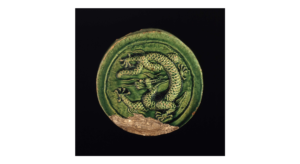
1933,0317.3
Description
Earthenware 'goutou' tile terminal with moulded decoration beneath a green glaze. This circular 'goutou' tile terminal has a raised border 2 cm wide and a relief-moulded dragon in the centre, covered with a bottle-green glaze. The dragon has a scaly sinewy body and paws with five flexed claws. It twists round, prancing on its front legs and turning its back legs under and over its tail. It is damaged along the lower edge and is missing its convex section.

